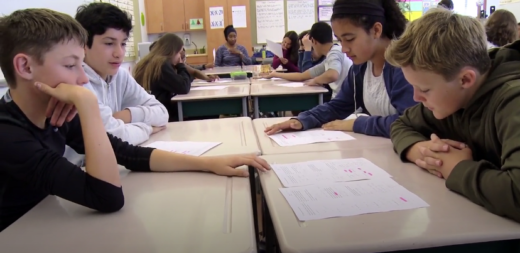Teachers know that students learn a tremendous amount from scrutinizing their mistakes, but getting them to take the time to stop and reflect is a challenge. Some teachers have stopped giving grades altogether to try to refocus class on learning instead of on grades. For others, that's too extreme. Leah Alcala, a seventh- and eighth-grade math teacher at King Middle School in Berkeley, California, developed a grading strategy that falls somewhere in the middle.
"What I was finding when I was handing back tests the old way, where I put a grade on it, was kids would look at their grade, decide whether they were good at math or not, and put the test away and never look at it again," Alcala says in a Teaching Channel video featuring her strategy.
Now when she returns tests, Alcala highlights mistakes and hands the tests back to students without a grade. She doesn't tell them what they did wrong; they have to figure that out.
"By not putting a grade on the test, I feel like what I'm allowing them to do is wrestle with the math they produced for me first and think of the grade second," Alcala said.
At first she got a lot of questions about how much things were worth and what grade they'd received. She had to continually remind them that in seventh grade it's more important that they learn the math than that they get a certain grade.


